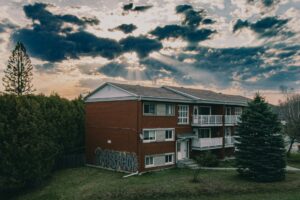Canada: Final Report Of The Alberta Affordable Housing
Introduction:
There are many challenges for affordable housing programs in Alberta. Some Albertans cannot find housing because they require specialized housing that can address unique safety and service needs. A larger number of Albertans cannot find housing because the market does not provide housing they can afford or housing that meets the need of those with physical or social barriers.
Housing market changes do not line up with shifts in household income or demographics, with housing prices and rental rates often lagging behind shifts in the economy and unique local conditions. Certain populations are more likely to experience housing needs than others and require targeted approaches. The Affordable housing is clear. Albertans need safe, suitable, and affordable housing to participate successfully in the economy and society.

Current Challenges in Affordable Housing:
The following provides a brief overview of the challenges and drivers for undertaking a holistic review of the affordable housing system in Alberta.
Growing demand for affordable housing:
The need for affordable housing is increasing, partly due to the projected increase in population, but also due to demographic changes within the population. Households are getting older, more diverse and their needs are changing, in part due to increased levels of immigration. Data show that the population of Alberta grew by almost 24% (776,825 people) from 2006 to 2016 and is expected to grow by another 32% by 2031. There are nearly 500,000 Albertans currently spending more than 30% of their household income on housing costs and 164,275 households in core housing need.
Diverse and unique needs:
There are significant differences in demographics and community needs in the various regions of Alberta. In Northern Alberta, up to 85% of tenants have ties to the Indigenous community and most households have children. In urban centers, more single adults and new immigrant families occupy community housing. People with disabilities, people transitioning from homelessness, LGBTQ2S+, victims of domestic violence and people struggling with mental health and addictions also require different accommodations to meet their needs. A single approach cannot adequately address all housing needs.
Challenges to increasing the supply of affordable housing:
Approximately 43,500 Alberta households were housed in regulated social housing units in 2019. As a result of Government of Alberta capital funding, a total of 537 new units were created from 2019 to 2020. These gains in stock were negated by a decrease in the number of rent supplement units because COVID-19 delayed the transition to a new rent supplement program.
Aging infrastructure:
The average age of affordable housing stock under agreement is more than 35 years old, with increasing need for ongoing maintenance. Government’s ownership of almost half of the affordable housing stock creates inefficiencies and delays in planning and completing maintenance work. Fluctuating capital development and maintenance costs add to the fiscal pressures to maintain the supply of government-owned or -supported units.
Fiscal challenges:
The costs of developing and sustaining affordable housing are borne by all levels of government, including the Government of Alberta. The government’s fiscal challenge requires that it reassess its return on investment in affordable housing and identify a new role for the provincial government in meeting the need for affordable housing with scarce resources.
System complexity:
Housing trends across Alberta suggest the need for tailored and local solutions. While some communities face declining populations, others are seeing an increase. Urban centres face different challenges than rural communities. The local needs of communities in our province cannot be addressed with a single, uniform approach. The current “one-size-fits-all” approach will not work. Rather, localized and customized housing solutions are required.
Conclusion:
The preceding recommendations from the Affordable Housing Review Panel are based on considerable research, input from a broad range of stakeholders, including individual Albertans, and extensive discussions on the options available and the impact of these recommendations on all Albertans. The Panels intends its recommendations bring about transformation. They shift the Government of Alberta’s role from ownership and control to partner and funder, and signal a need to transform programs to focus on supporting Albertans, not operators, and to engage the capacity of the private sector in expanding the delivery of affordable housing in an efficient and sustainable manner.
Also Read: Making Unaffordable to Affordable: Looking into Affordable Housing Issues and Its Remedies
